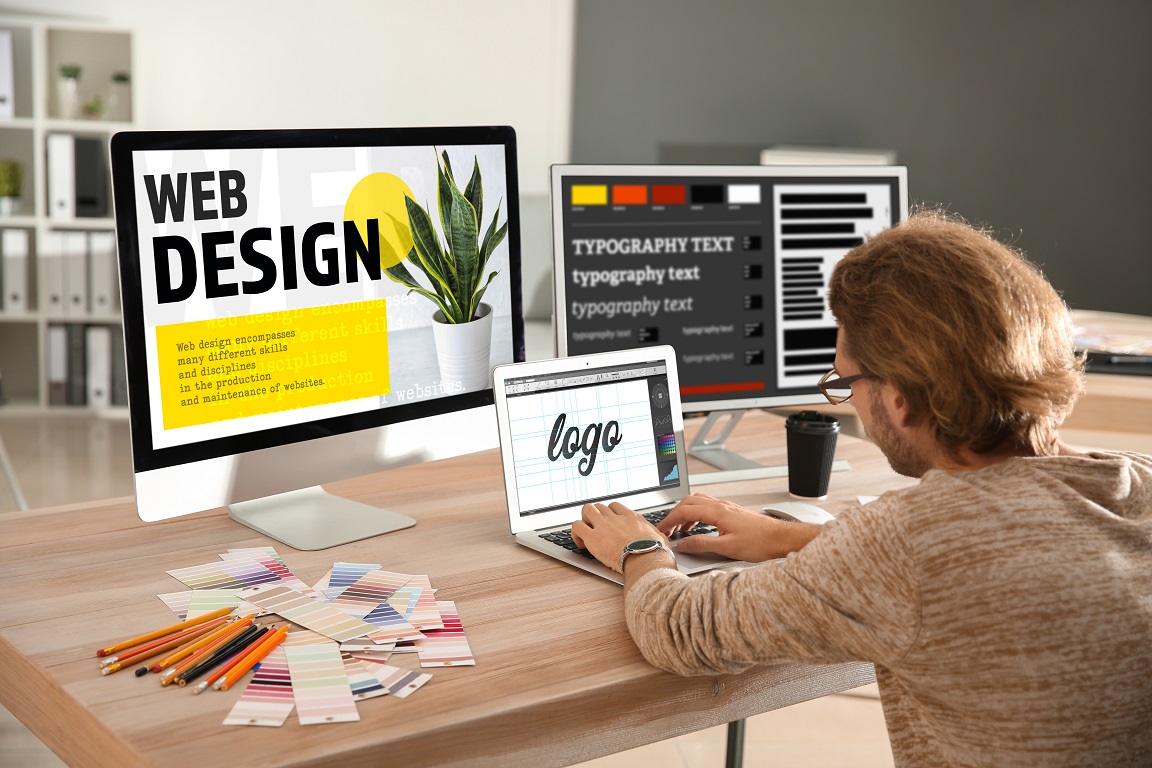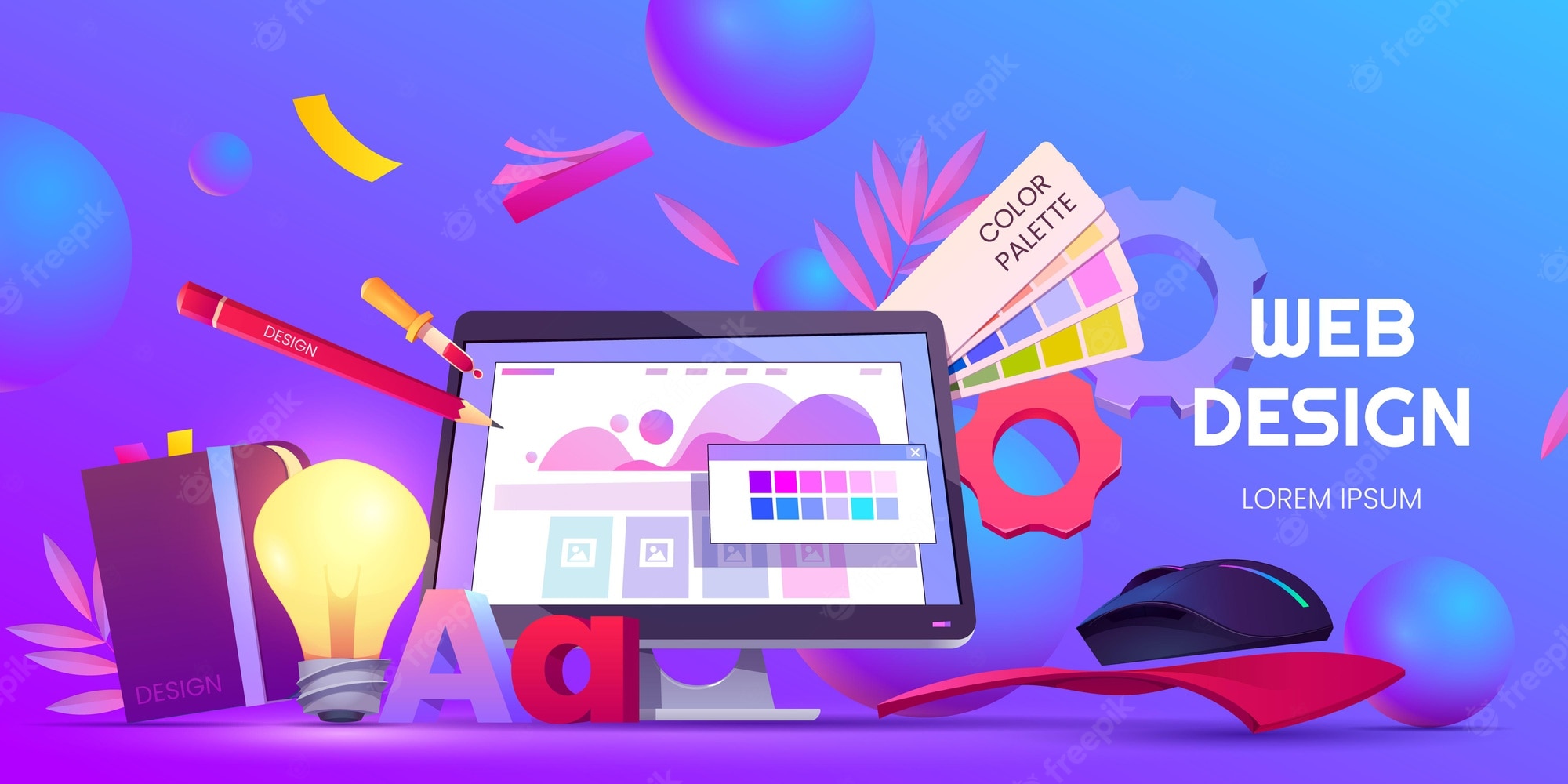How a Web Design Agency uses SEO strategies to boost online visibility
Wiki Article
Discovering Creative Patterns in Web Design for Modern Businesses
The landscape of web design is continually evolving, showing the vibrant requirements of modern-day services. Recent fads highlight a choice for minimalism, bold typography, and appealing interactivity. Companies progressively prioritize user experience with mobile-first concepts and customized material. In addition, a concentrate on sustainability is getting grip. Recognizing these trends is essential for companies aiming to stand apart in a congested marketplace. What effects do these shifts hold for the future of digital interaction?Welcoming Bold Typography
Strong typography has actually become a specifying element in modern web design, recording focus and sharing messages with striking quality. This fad focuses on aesthetically impactful text that enhances user interaction and brand identification. Designers often use extra-large typefaces and unique typefaces to create a hierarchy, guiding viewers via web content flawlessly.
The strategic use of strong typography enables efficient storytelling, making it possible for brands to connect their values succinctly. It offers not only visual objectives however likewise functional ones, as it boosts readability throughout devices and screen sizes.
As internet sites contend for user focus, bold typography sticks out in a saturated digital landscape. Its convenience enables developers to try out contrasting formats and colors, further enhancing its effectiveness. Ultimately, welcoming bold typography stands for a shift towards more expressive and communicative web design, cultivating a deeper link in between brands and their target markets.
The Rise of Minimalist Layout
As electronic environments become increasingly messy, the rise of minimal design uses an invigorating choice that prioritizes simplicity and capability. This layout approach remove unneeded aspects, enabling material to take center phase. By focusing on clean lines, sufficient white space, and a limited shade combination, minimalist layout improves user experience and improves navigating.Services adopting this fad objective to convey their brand message plainly and properly, promoting a feeling of calm and clearness. The lack of disturbances assists users concentrate on crucial information, causing boosted engagement and conversion prices. Furthermore, minimalist style lines up well with mobile-first methods, making sure that web sites continue to be accessible and straightforward across numerous devices.
Ultimately, the increase of minimal style reflects a more comprehensive change towards prioritizing user needs and choices, making it a powerful device for modern-day businesses wanting to make a long-term impact in the electronic landscape.
Immersive Animations and Interactivity
While many internet designers embrace minimalist looks, one more compelling trend acquiring traction is the use of immersive animations and interactivity. This method boosts user involvement by creating intriguing experiences that attract site visitors into the material. Designers utilize dynamic aspects such as computer animated backgrounds, scrolling impacts, and interactive infographics to communicate complicated ideas in an accessible way.These animations not only supply visual passion yet also overview customers through the navigation procedure, making interactions much more intuitive. Float results and animated shifts can encourage users to discover additionally, leading to boosted time invested on the site.
Additionally, this pattern lines up with the more comprehensive movement towards storytelling in web design, where computer animations offer as narrative tools that communicate brand messages successfully. By incorporating immersive animations and interactivity, businesses can differentiate themselves in a congested online landscape, inevitably improving user satisfaction and brand name commitment.
Mobile-First Style Principles
Mobile-first style concepts highlight focusing on user experience by making certain sites function flawlessly on smaller displays. This technique incorporates responsive format strategies that adjust to numerous tool sizes while keeping visual integrity. In addition, it concentrates on touchscreen navigation style, improving usability for mobile individuals.Focusing On User Experience
Just how can developers effectively focus on user experience in a progressively mobile-centric world? Stressing mobile-first layout concepts is important, as users mostly engage with internet sites with smart phones. This approach urges designers to simplify content, guaranteeing it is navigable and conveniently available on smaller screens. Trick practices include simplifying navigating, minimizing tons times, and employing touch-friendly elements that boost interactivity. Furthermore, prioritizing clear typography and user-friendly formats can significantly boost user contentment. Designers ought to constantly gather user feedback to refine their methods, adjusting to evolving user demands and choices. By concentrating on these aspects, companies can develop an engaging electronic experience that fosters loyalty and drives conversions, eventually straightening with the expectations of today's mobile individuals.Responsive Format Methods
Designers embrace responsive layout methods to develop adaptable and flexible internet experiences that accommodate different display dimensions. This approach prioritizes mobile-first design concepts, making sure peak capability on smaller sized gadgets before scaling up for bigger displays. By utilizing fluid grids, flexible pictures, and media queries, designers can maintain a natural aesthetic identity across all platforms. This strategy not only enhances user interaction yet likewise improves online search engine positions, as mobile-friendly sites are favored by search formulas. In addition, receptive formats permit companies to reach a wider target market, suiting users on you can check here smart devices, desktop computers, and tablet computers alike. Generally, executing these methods is necessary for modern web design, ensuring that organizations stay affordable in an ever-evolving digital landscape.Touchscreen Navigating Style
With the surge of smart phones, touchscreen navigation has actually become a fundamental element of web design. Designers are significantly embracing mobile-first principles to boost user experience and interaction. Web Design Agency. Effective touchscreen navigating prioritizes larger switches and intuitive gestures, permitting individuals to connect quickly with content. This technique lowers frustration and urges expedition, as users can navigate effortlessly with their fingers. Furthermore, including swipe motions and faucet performance accommodates the natural actions of mobile customers. Feedback systems, such as aesthetic signs and animations, improve functionality additionally by validating activities. As touchscreens control user communications, utilizing these design aspects not just lines up with modern-day assumptions yet also cultivates a more obtainable and satisfying browsing experience for all usersIndividualized User Experiences
What makes a customer feel genuinely engaged on a site? The answer frequently depends on personalized user experiences. By customizing web content and navigating to individual choices, services can produce a significant connection with their audience. This customization can be accomplished with different approaches, such as assessing user habits, utilizing cookies, and providing tailored referrals based upon previous communications.E-commerce systems that recommend items based on surfing background not only enhance user experience yet additionally boost conversion prices. Moreover, incorporating dynamic content that adapts to the user's location or time of day can even more enrich involvement.
Additionally, customized introductions or messages can make individuals feel valued and comprehended. As modern services seek to attract attention in a competitive electronic landscape, welcoming personalized user experiences becomes crucial, promoting loyalty and encouraging repeat sees. Inevitably, this technique changes a basic web site right into an interactive platform that resonates with its audience.
Sustainability in Web Design
As the digital landscape remains to advance, the value of sustainability in web design has actually gained substantial interest. Designers are increasingly knowledgeable about the environmental effect their developments can have, triggering a shift in the direction of green methods (web design company). Sustainable web design concentrates on optimizing sites to lower energy usage and carbon footprints. Approaches consist of making use of minimalistic More hints design principles, maximizing pictures, and utilizing effective coding practices to boost loading speedsThe option of hosting companies plays an essential duty; numerous designers are now opting for eco-friendly organizing services powered by renewable power. By focusing on availability and user-friendly navigating, sustainable designs additionally satisfy a wider target market, enhancing functionality. This conscious method not only attract environmentally-minded customers yet additionally adds to the total longevity and efficiency of sites. Ultimately, sustainability in web design mirrors an expanding fad in the direction of accountable electronic practices that line up with modern organization values.

Regularly Asked Questions
How Can I Choose the Right Color Pattern for My Internet site?
To choose the appropriate color plan for a site, one ought to take into consideration the brand's identity, target market, and psychological learn the facts here now influence. Making use of shade concept and screening mixes can enhance user experience and visual allure considerably.What Are the most effective Devices for Prototyping Internet Styles?
The most effective tools for prototyping website design consist of Figma, Lay out, Adobe XD, and InVision. These platforms provide instinctive interfaces, partnership attributes, and extensive libraries, making them ideal for developers to create and improve their concepts properly.Exactly how Do I Gauge the Efficiency of My Web Design?
To measure web design performance, one should examine user involvement metrics, conversion prices, and use comments (Website Design Agency). A/B screening and heatmaps can likewise supply understandings into user behavior, directing necessary modifications for enhanced efficiency and user experienceWhat Are Common Web Design Errors to Avoid?
Typical web design errors include messy layouts, poor navigation, slow-moving filling times, lack of mobile optimization, poor comparison, and overlooking user responses. Preventing these challenges enhances user experience and increases general performance of the site.Just how Often Should I Update My Website Layout?
A web site style should be updated every 2 to 3 years, or earlier if significant modifications in branding or technology happen. Routine updates keep the website fresh, practical, and aligned with current user expectations.
Report this wiki page